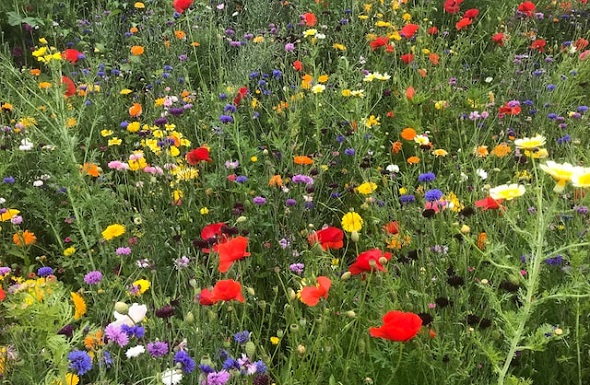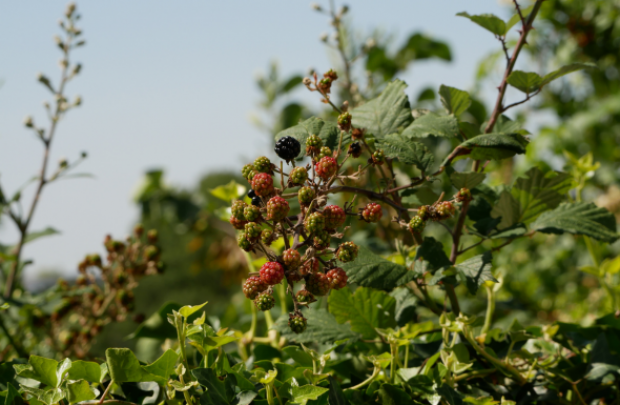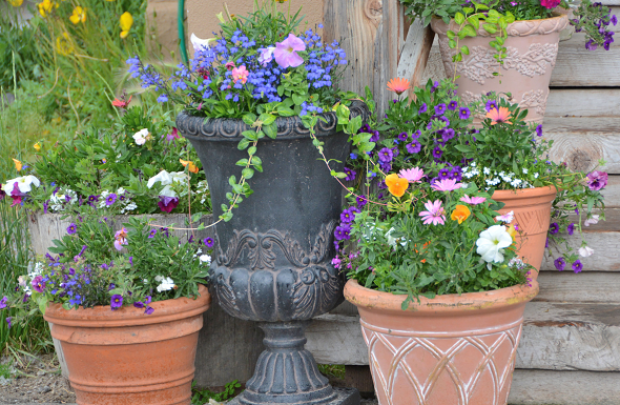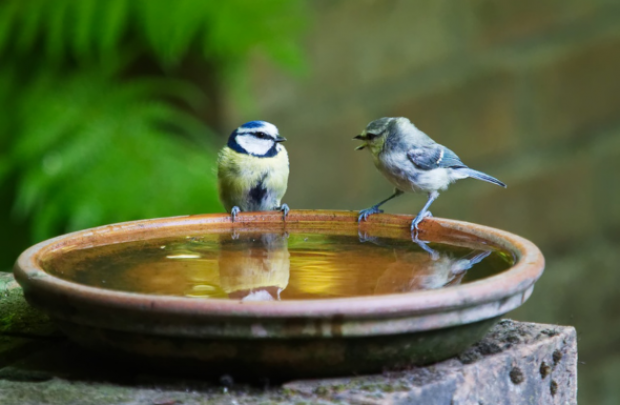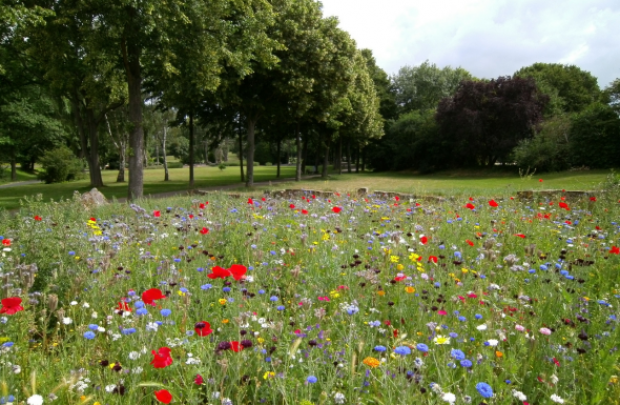Go wild and get creative with nurturing nature and giving back to wildlife this autumn!
Written by Amber Jepson, university student and Naturehood volunteer blogger
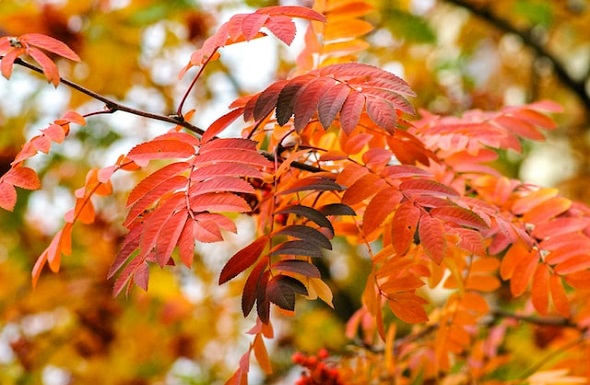
With the arrival of November, darker nights and colder weather are here! Autumn can be a tough time for wildlife, due to the stressors associated with gathering and foraging foods for the encroaching winter months.
For us, autumn is a time to reap the bounty of harvest, wrapping up warm against the foreboding colder, wetter weather; for enjoying a warm hot chocolate whilst watching the transitioning landscape turn from all around green to darker tones.
We watch as leaves turn to dusty yellows, deep reds, and dark browns, whilst various berries and nuts appear perfectly developed on the tree’s branches, ready to be eaten by leaping squirrels, soaring birds, and scurrying mammals of the undergrowth.
For nature, autumn comes with difficulty – many species prepare for hibernation, whilst others gather resources to provide energy for the coming seasons of unrest and harsher, offensive weather.
Wildlife carries the burdens of a timeless cycle filled with rigorous autumn foraging, mating rituals and territory claiming. Moreover, stressors not often considered have been around for decades - wildlife has been put under pressure to compete with humans for space and resources to survive.
New buildings, roads, car parks and much more are growing and expanding, taking over so many green spaces and natural landscapes, destroying vital habitats that wildlife depend on to survive during the difficult winter and autumn months.
Habitat fragmentation (the separation of wild areas that isolate species populations and cause less diversity within newly separate populations) has become a growing concern as roads, trainlines and buildings separate habitats and species populations, cutting off opportunities to access resources and mates. Autumn is the perfect time to act and start giving back to wildlife.
Here are some tips on what you can do to boost biodiversity and help wildlife in your area!
Feed the birds
Providing food for wildlife, especially birds, is an age-old, though an especially important tip that you will often be advised to do as winter draws near. There are many species that are permanent residents in the UK, and this is because our temperate climate is favourable to many bird species who have adapted to put their energy into living and surviving in the temperate UK autumn/winter climate, rather than putting energies into migrating.
However, with less and less land to provide sustenance for birds, and with less invertebrates to feast on, many bird species struggle to find enough food during the autumn/winter periods. That is where bird feeders and fat balls come in.
Placement of feeds, as well as what feeds to use, is crucial towards catering for different species of birds, ensuing all bird species are represented. Many passerine bird species love bird feeders that are high off the ground and in open areas, though positioned close to places of refuge, like trees and hedgerows.
Opposingly, many thrush species, corvids (crows, jackdaws, ravens etc.), pigeons and doves like to forage for seeds and other foodstuff on the ground, in open spaces and covered areas. It is particularly important to note that where many birds come to congregate and feed, there is increased risk of diseases being spread.
You may have heard that, unfortunately, avian influenza (bird flu) has once again struck Britain and has caused high mortality in many bird populations. Fortunately, there are ways that you can help prevent the spread of nasty infections! It is important that, if you have a bird tables, to clean bird tables regularly od droppings, as this is one of the most common ways that infections are spread.
It is also important to clean any bird feeders and ground trays that also end up with bird faeces on them. If you have a ground tray filled with food, it is important to remove the tray during night times and keep food on the bird table and in feeders for these times, as food left out on the ground at night will attract rats, which can be a carrier and transmitter of some bird related diseases.
If feeders take several days to clear of food, it is important to reduce the amount of food you are putting out to reduce the amount of time the feed is exposed to the elements and potential pathogens. Other ways that you can prevent diseases spreading through bird feeders and other food-related stations can be found here.
For people who may not own their own green space or garden, there are ways you can still contribute towards feeding the birds! For example, as a university student with limited accommodation choices that offer garden space, I attach a stick-on bird feeder to my window to provide food for the birds. Information on the best and cheapest window bird feeders can be found here. Remember that birds still need access to water sources during the autumn/winter seasons, to accompany food and stay hydrated!
Regarding foodstuff, there are many species considerations – some birds are meticulous and only go for certain feeds, whereas others love to gobble on most bird feeds. It all depends on what you want to attract!
Obviously, it is important to keep an open mind and try to cater for a variety of species, if not all. Birds can still gain much nutrition from wild spaces, particularly from autumn flowering buds, such as that of honeysuckle, hawthorn, holly, and ivy. Autumn is also the time when berries appear, and many bird species, particularly thrushes, take advantage of such tasty treats.
Normally, many bird species will hunt for insects, too, though easier access to insect populations starts to plummet once the cold sets in, as many insects birds feed on tend to burrow deep into the soil to avoid the colder temperatures.
For feeders in your gardens, mini-nature reserves and wild spaces, birds love to eat nutritious peanuts, fat-filled seeds, suet, and cereals. Suet (fat balls) are always well appreciated by every bird species, particularly smaller birds, and even more so during autumn.
You can buy pre-made fat balls, or you can get creative and make them yourself – which, oftentimes is better since you have the option of adding more healthy and exciting treats to them!
Peanuts are enjoyed by many bird species - including house sparrows, tit species, robins, siskins, and greenfinches - though it is important to consider the choking hazard that whole peanuts may present, so sometimes bird feeder friendly crushed peanuts are best, or crush them yourself!
Sunflower seeds are a favourite among all seed-loving birds and is usually available in seed feeds available at shops. Another clever way to feed the birds, is to prepare and plant bird-loving autumn plants – some were mentioned earlier: holly, ivy, honeysuckle, and hawthorn, as well as sunflowers, too.
Planting these for autumn will mean that the birds will be kept fed each year as the plant rejuvenates its buds and berries, as well as being a cheaper bird feeding option for many bird-lovers!
As well as feeding birds, other animal species that need a helping hand include the UK’s favourite little mammal, the hedgehog.
Some easy ways to help hedgehogs this autumn would be to leave out cat food (preferably wet feed to prevent dehydration from dry feeds), as well as mealworms and hedgehog specific foods. This will help the hedgehogs prepare for their long hibernation over winter, by building up their fat and sugar reserves for energy and for insulation.
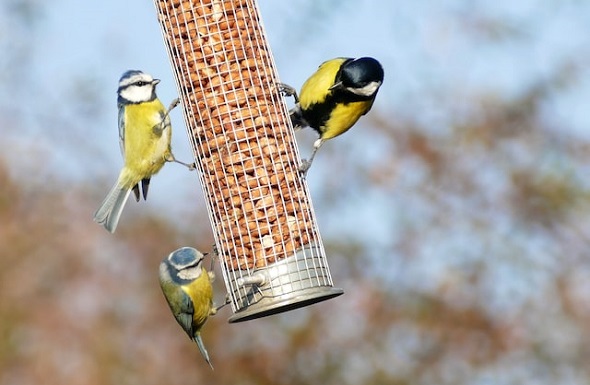
Mini wildlife reserves/gardens at home and at school
Many schools are part of green projects and keep allotments, as well as green spaces and gardens for wildlife. These can be considered mini-nature reserves. Schools are often situated in urban areas; therefore, many instances of green spaces being created by students and teachers help boost the number of green spaces in urban areas, giving nature a home and getting young people inspired to act for nature!
Ideas for a mini nature reserve include:
- Creating log stacks and mini-beast sanctuaries that will encourage species like burrowing beetles, woodlice and even centipedes and amphibians. Remember that most burrowing insects and species listed above prefer rotting logs that they will be able to burrow into and devour, as many insects are natural decomposers, the rottener the log, the better!
- Create your own wildflower meadow! (Read on for more details).
- Having a pond in a mini-nature reserve will entice many aquatic species to visit your little haven and will aid aquatic species in finding safe spaces during the autumn months. Many male frogs reside in the murky depths of ponds over the colder months. Care must be taken to ensure that the pond does not freeze over, trapping decomposing material within the pond and creating toxic conditions for the frogs and killing them. To prevent the pond from freezing over, place a tennis ball on the water's surface, which will prevent a complete freeze over.
- Putting turned over plant pots filled with small twigs and sticks for insects and small mammals.
- Hanging out bird feeders, especially close to trees and hedgerows, as well as having a couple out in the open, will encourage many species of bird to stay in proximity to your wild space! It would be a good idea to leave hedgerows, bushes, and shrubs that produce berries in autumn, too, as many birds switch from an insectivorous diet to a berry, nut, and seed diet during the autumn months as the insect presence starts to wane. Brambles are a fantastic example of a bush to keep growing in your wild space.
- Keep sections of your mini-nature reserve wild! Leave patches of grass unattended and able to grow along alongside weeds and other plant species to encourage hedgehogs and other small mammals into the area, as well as allowing insects some refuge.
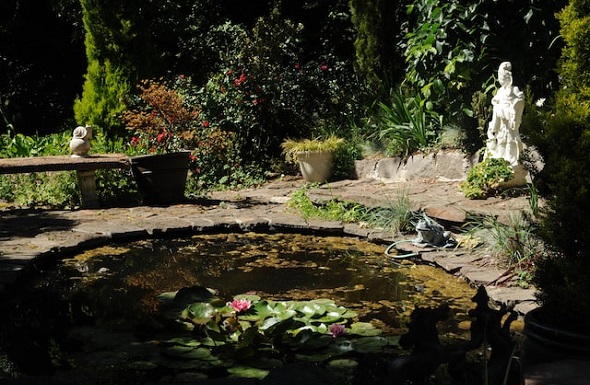
Lights out!
As the nights grow longer with each day winter approaches, it encourages nocturnal life to become more active for longer periods. The darkness serves as protection and as optimum hunting time for many species. Some animals are light sensitive, so it is extremely important to reduce your light pollution and turn off the lights!
The impacts of light pollution due to anthropological (human) factors are devastating on wildlife and even affect humans. Sky glow: the unnatural white glow often encompassing urban areas, is disturbing sleep, and causing interruptions with many wildlife circadian cycles (the natural internal clock that governs day and night-time activities) affecting many physiological processes within all organisms. Artificial light can have great negative implications for wildlife and for humans, so it is important to understand the effects of light pollution and what you can do to reduce it.
Birds are one species that are greatly affected by bright lights, especially migratory birds who depend on the night sky for navigation and often get confused when light pollution is high. This often leads to a higher mortality rate in migratory birds, and sadly it is becoming a huge problem, so much so that some areas have developed lights out schemes that demand all large building lights to remain off during important bird migrations.
The insects that remain a constant sighting year-round are also greatly affected by light pollution, with many being attracted to bright lights and often die to due contact with the light sources – an example of a maladaptive trait; an adaptation that is more helpful than harmful.
Frog and toad species, for example, sometimes mistake small light decorations as food, since some of their prey are associated with light, and try to eat the light, causing them to choke and die. Just turning off lights and reducing the amount of time lights are on at night and limiting lights used in the garden can really help in the long-term survival of many wildlife species during the darker months.
What is more alarming is that places that are sparse and remote are experiencing light pollution. Take Snowdonia, for example – locals that live within the astounding, ethereal mountain range talk of lost nights of beautiful undisturbed night skies dazzling with stars and many astronomical objects – some even claiming to have seen planets and whole constellations.
However, it is becoming increasingly popular to venture around Snowdonia National Park at night, armed with torches and headlights, as well as car lights etc., that takes away that once clear night sky that many wildlife species depend on. Imagine all the wildlife living within the expanses of Snowdonia that may be affected behaviourally and physically by the growing threats of light pollution.
Things you can do to help:
- Keep blinds and curtains drawn when using light inside the home
- Keep outdoor light to a minimum where there is control over it, and if light is necessary outdoors at night, ensure measures are taken to direct light downwards and shielded, stopping light projecting into the night sky.
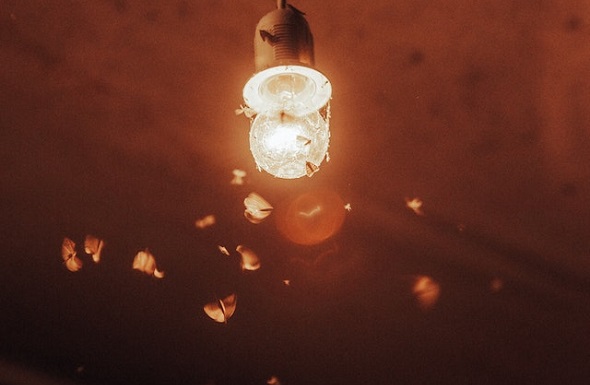
Create your own wildflower meadow
Creating small flowerbeds and planting bulbs that will be ready to sprout next spring can be very productive during the autumn season. In fact, it is the best season to do so! It has been proven that by planting plants, wild weeds and wildflower species during autumn causes your garden to transform into a beautiful blooming refuge for wildlife when spring arrives! Many people are getting more invested in creating wildflower meadows that benefit many insect species and attract so much biodiversity! Some flowers and plants to consider planting ready for spring can be listed here and a guide to creating a wildflower meadow this autumn, here.
